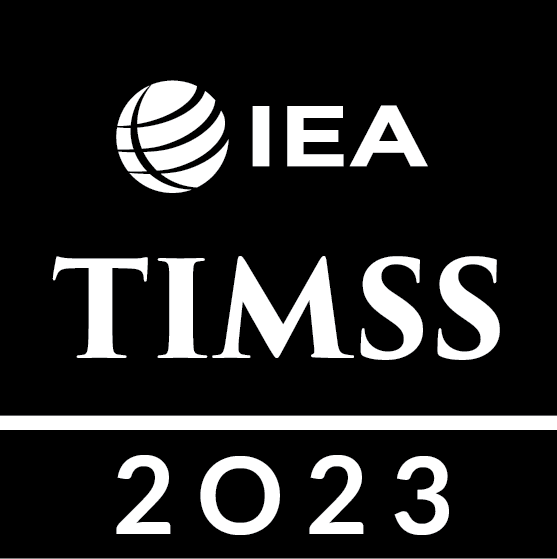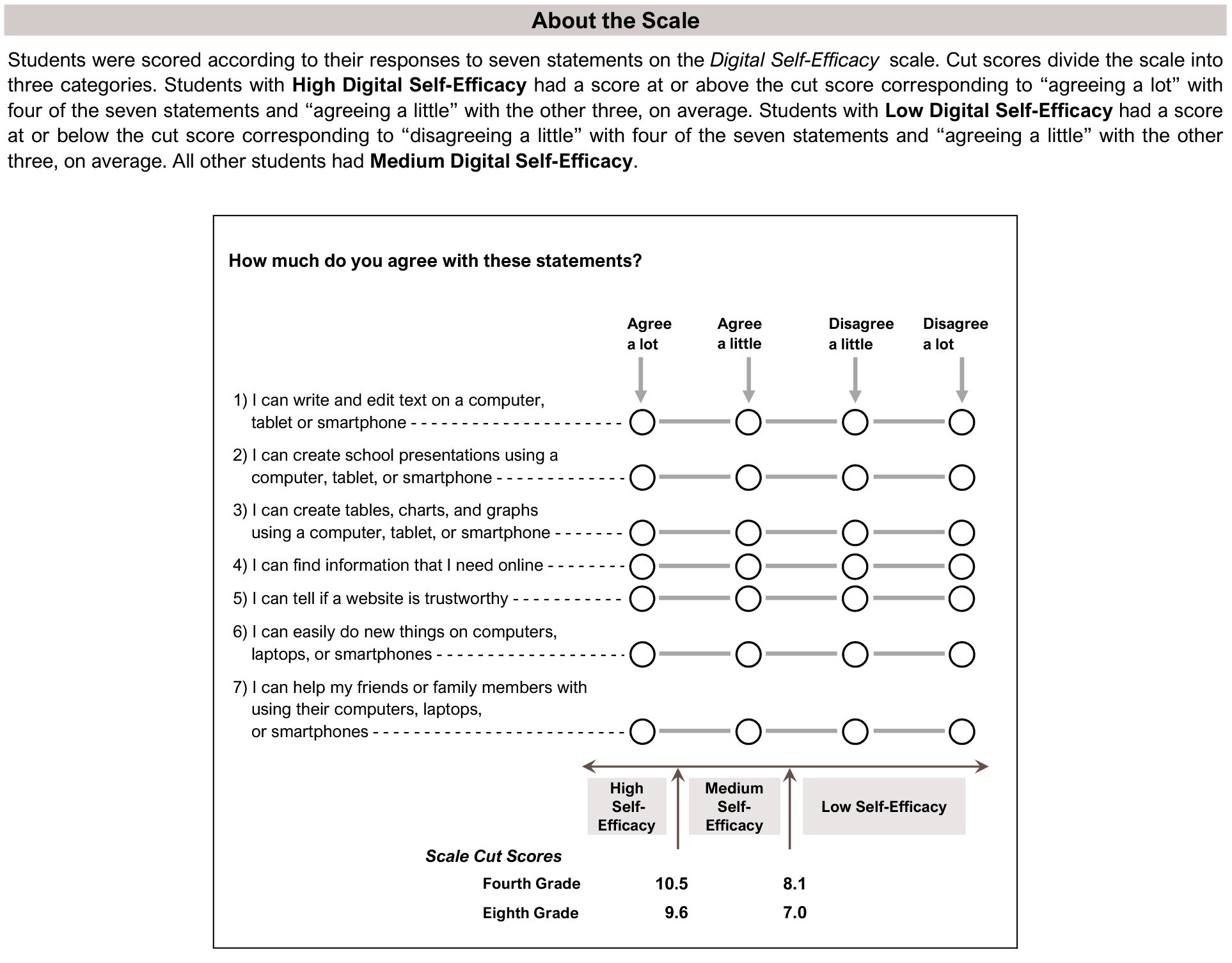Students Digital Efficacy
Student Experiences and Attitudes
Students’ Digital Self-Efficacy
Digital self-efficacy has a positive relationship with mathematics and science achievement for fourth- and eighth-grade students. Internationally, a majority of students in both grades reported at least some confidence in their ability to use digital devices. The TIMSS 2023 Digital Self-Efficacy scale (Exhibit 6.4.1) is based on students’ agreement with statements about confidence in using digital devices in different ways, such as writing text or creating presentations. Based on their responses, students were classified as having “high,” “medium,” or “low” digital self-efficacy.
Internationally, about half of fourth-grade students (49%) were classified as having “medium” digital self-efficacy and an additional 36 percent were classified as having “high” digital self-efficacy. The remaining 15 percent of students were classified as having “low” digital self-efficacy. In both subjects, fourth-grade students with greater digital self-efficacy had higher average mathematics and science achievement. Students classified as having “high” digital self-efficacy had an average achievement of 518 in mathematics and 512 in science and fourth-grade students classified as having “low” digital self-efficacy had an average achievement of 477 in mathematics and 468 in science, internationally. Average achievement for fourth graders with “medium” digital self-efficacy was in between (503 in mathematics and 493 in science).
On average, over half of eighth-grade students (56%) were classified as having “high” digital self-efficacy and an additional 37 percent were classified as having “medium” digital self-efficacy. Only 6 percent of eighth-grade students were classified as having “low” digital self-efficacy. Eighth-grade students classified as having greater digital self-efficacy had higher average achievement in both subjects. Students with “high” digital self-efficacy had an average achievement of 492 in mathematics, those with “medium” digital self-efficacy had an average achievement of 459, and the small percentage of students with “low” digital self-efficacy had an average achievement of 408. In science, students with “high” digital self-efficacy had an average achievement of 493, those with “medium” digital self-efficacy had an average achievement of 456, and the even smaller percentage of students with “low” digital self-efficacy had an average achievement of 396.
Read More
Students’ Digital Self-Efficacy
Very Much Like
Somewhat Like
Do Not Like
This TIMSS context questionnaire scale was established in 2023 based on the combined response distribution of countries that participated in TIMSS 2023. To provide a point of reference for country comparisons, the scale centerpoint of 10 was located at the mean of the combined distribution. The units of the scale were chosen so that 2 scale score points corresponded to the standard deviation of the distribution.
( ) Standard errors appear in parentheses. Because of rounding some results may appear inconsistent.
An “r” indicates data are available for at least 70% but less than 85% of the students.
A tilde (~) indicates insufficient data to report result.
Scroll Up

